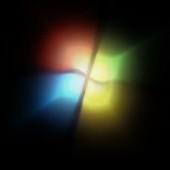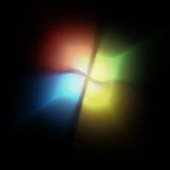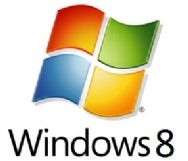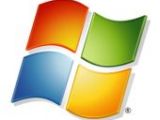Windows 8 - Next Wave of Growth and New Challenges for Microsoft Chrome OS among them
>> Thursday, December 31, 2009
Moving onward after the successful delivery of Windows 7, Microsoft is concerned not only with putting together the lines of code that will finish up as Windows 8, but also with the evolution of the Windows brand. While the company continues to be largely sister on Windows 7’s successor, and for lovely reason since Windows 7 GA was three months ago, various inside sources have confirmed, albeit unofficially, that Windows 8 planning is already in full swing. However, beyond, future capabilities, features and default components, the application giant is also tending to the evolution of its branding strategy that has Windows at the core.
Earlier this month, Microsoft was looking for the Senior Director of Windows Brand Strategy, a “role [that] will focus on the ‘trifecta’ of Windows brands for the consumer audience (i.e. Windows 7, Windows Live and Windows phone) - providing thought leadership on the query of how the company can evolve and optimize the Windows brand experience in the years to come with Windows 8 and beyond. However, this role will also partner closely with leaders and colleagues on the commercial audience pivot to refine and evolve the holistic brand strategy for Windows Client, Windows Server, Windows Azure and Windows Embedded,” according to Microsoft.
The Windows brand strategy will move forward along with the operating technique itself, and it will fall onto Microsoft to make sure that marketing is tailored to consumers, that public relations are strengthened, and to manage events, web presence and relationships in a manner that will benefit the product.
“The Brand Strategy team (Central Marketing Group) works closely with the company’s business group leaders, marketers and engineers to set and manage Microsoft’s brand portfolio strategy, identity, and architecture. The group also tracks and measures brand health of the Microsoft master brand and key sub brands,” the company noted.
As Windows 8 will start to take contour and Microsoft will enter what the company is thinking about the next wave of growth, it will be CMG’s efforts that will be responsible for attracting new customers, and making marketing campaigns increasingly efficient. According to the application giant, the Senior Director, Windows Brand Strategy will work on Windows brand architecture, strategy, naming, identity, and brand health measurement.
“The Windows brand is the flagship of Microsoft’s brand portfolio. Synonymous with Microsoft for much of its history, the Windows brand has amazingly strong global brand equity. Over 1 billion people use Windows application on their PC every day, and 500 million people use Windows Live services on the world wide web or mobile phone. While the equity is strong, the Windows brand is facing new challenges from the changing marketplace and competitive pressures. Google, with its Android and Chrome operating systems, poses a whole new set of challenges in addition to the traditional competition from Apple,” the company said.
What is interesting is that Microsoft mentions Apple and Google Chrome OS, but ignores Linux. And fact is that even ahead of Windows 7’s GA, Windows XP managed to win the netbook war against Linux, and grab the vast majority of the market. Meanwhile, Mac sales continue to push up the market share of Mac OS X, although Apple’s OS did trip a tiny after Windows 7 was launched.
Linux continues to hold approximately 1% of the OS market, according to Net Applications, but apparently Microsoft is more concerned with newcomer Google Chrome OS, which will only be available to customers preinstalled on new netbooks at the finish of 2010. Still, Chrome OS will have not only the Google financial power behind it, but and a brand that consumers largely applaud and are quick to embrace because of the search engine that has become virtually synonymous with the Net.
Earlier this month, Microsoft was looking for the Senior Director of Windows Brand Strategy, a “role [that] will focus on the ‘trifecta’ of Windows brands for the consumer audience (i.e. Windows 7, Windows Live and Windows phone) - providing thought leadership on the query of how the company can evolve and optimize the Windows brand experience in the years to come with Windows 8 and beyond. However, this role will also partner closely with leaders and colleagues on the commercial audience pivot to refine and evolve the holistic brand strategy for Windows Client, Windows Server, Windows Azure and Windows Embedded,” according to Microsoft.
The Windows brand strategy will move forward along with the operating technique itself, and it will fall onto Microsoft to make sure that marketing is tailored to consumers, that public relations are strengthened, and to manage events, web presence and relationships in a manner that will benefit the product.
“The Brand Strategy team (Central Marketing Group) works closely with the company’s business group leaders, marketers and engineers to set and manage Microsoft’s brand portfolio strategy, identity, and architecture. The group also tracks and measures brand health of the Microsoft master brand and key sub brands,” the company noted.
As Windows 8 will start to take contour and Microsoft will enter what the company is thinking about the next wave of growth, it will be CMG’s efforts that will be responsible for attracting new customers, and making marketing campaigns increasingly efficient. According to the application giant, the Senior Director, Windows Brand Strategy will work on Windows brand architecture, strategy, naming, identity, and brand health measurement.
“The Windows brand is the flagship of Microsoft’s brand portfolio. Synonymous with Microsoft for much of its history, the Windows brand has amazingly strong global brand equity. Over 1 billion people use Windows application on their PC every day, and 500 million people use Windows Live services on the world wide web or mobile phone. While the equity is strong, the Windows brand is facing new challenges from the changing marketplace and competitive pressures. Google, with its Android and Chrome operating systems, poses a whole new set of challenges in addition to the traditional competition from Apple,” the company said.
What is interesting is that Microsoft mentions Apple and Google Chrome OS, but ignores Linux. And fact is that even ahead of Windows 7’s GA, Windows XP managed to win the netbook war against Linux, and grab the vast majority of the market. Meanwhile, Mac sales continue to push up the market share of Mac OS X, although Apple’s OS did trip a tiny after Windows 7 was launched.
Linux continues to hold approximately 1% of the OS market, according to Net Applications, but apparently Microsoft is more concerned with newcomer Google Chrome OS, which will only be available to customers preinstalled on new netbooks at the finish of 2010. Still, Chrome OS will have not only the Google financial power behind it, but and a brand that consumers largely applaud and are quick to embrace because of the search engine that has become virtually synonymous with the Net.



















